Stimulated hepatic stellate cell promotes progression of hepatocellular carcinoma due to protein kinase R activation
- PMID: 30794626
- PMCID: PMC6386440
- DOI: 10.1371/journal.pone.0212589
Stimulated hepatic stellate cell promotes progression of hepatocellular carcinoma due to protein kinase R activation
Abstract
Hepatic stellate cells (HSCs) were reported to promote the progression of hepatocellular carcinoma (HCC), however its mechanism is uncertain. We previously reported that protein kinase R (PKR) in hepatocytes regulated HCC proliferation. In this study, we focused on the role of PKR in HSCs, and clarified the mechanism of its association with HCC progression. We confirmed the activation of PKR in a human HSC cell line (LX-2 cell). IL-1β is produced from HSCs stimulated by lipopolysaccharide (LPS) or palmitic acid which are likely activators of PKR in non-alcoholic steatohepatitis (NASH). Production was assessed by real-time PCR and ELISA. C16 and small interfering RNA (siRNA) were used to inhibit PKR in HSCs. The HCC cell line (HepG2 cell) was cultured with HSC conditioning medium to assess HCC progression, which was evaluated by proliferation and scratch assays. Expression of PKR was increased and activated in stimulated HSCs, and IL-1β production was also increased molecular. Key molecules of the mitogen-activated protein kinase pathway were also upregulated and activated by LPS. Otherwise, PKR inhibition by C16 and PKR siRNA decreased IL-1β production. HCC progression was promoted by HSC-stimulated conditioning medium although it was reduced by the conditioning medium from PKR-inhibited HSCs. Moreover, palmitic acid also upregulated IL-1β expression in HSCs, and conditioning medium from palmitic acid-stimulated HSCs promoted HCC proliferation. Stimulated HSCs by activators of PKR in NASH could play a role in promoting HCC progression through the production of IL-1β, via a mechanism that seems to be dependent on PKR activation.
Conflict of interest statement
The authors have declared that no competing interests exist.
Figures
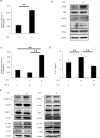
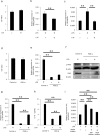
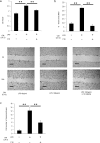
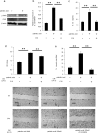
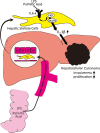
Similar articles
-
Endoplasmic reticulum stress sensor protein PERK in hepatic stellate cells promotes the progression of hepatocellular carcinoma via p38δ MAPK/IL-1β axis.Sci Rep. 2025 Jun 6;15(1):20030. doi: 10.1038/s41598-025-04150-w. Sci Rep. 2025. PMID: 40481076 Free PMC article.
-
Periostin involved in the activated hepatic stellate cells-induced progression of residual hepatocellular carcinoma after sublethal heat treatment: its role and potential for therapeutic inhibition.J Transl Med. 2018 Nov 6;16(1):302. doi: 10.1186/s12967-018-1676-3. J Transl Med. 2018. PMID: 30400797 Free PMC article.
-
Activated hepatic stellate cells promote hepatocellular carcinoma cell migration and invasion via the activation of FAK-MMP9 signaling.Oncol Rep. 2014 Feb;31(2):641-8. doi: 10.3892/or.2013.2872. Epub 2013 Nov 27. Oncol Rep. 2014. PMID: 24284889
-
Therapeutic modulators of hepatic stellate cells for hepatocellular carcinoma.Int J Cancer. 2020 Sep 15;147(6):1519-1527. doi: 10.1002/ijc.32899. Epub 2020 Mar 5. Int J Cancer. 2020. PMID: 32010970 Review.
-
Hepatic Stellate Cell: A Potential Target for Hepatocellular Carcinoma.Curr Mol Pharmacol. 2020;13(4):261-272. doi: 10.2174/1874467213666200224102820. Curr Mol Pharmacol. 2020. PMID: 32091349 Review.
Cited by
-
The diagnostic and prognostic implications of PRKRA expression in HBV-related hepatocellular carcinoma.Infect Agent Cancer. 2022 Jun 21;17(1):34. doi: 10.1186/s13027-022-00430-6. Infect Agent Cancer. 2022. PMID: 35729579 Free PMC article.
-
Stress and Liver Fibrogenesis: Understanding the Role and Regulation of Stress Response Pathways in Hepatic Stellate Cells.Am J Pathol. 2023 Oct;193(10):1363-1376. doi: 10.1016/j.ajpath.2023.06.006. Epub 2023 Jul 7. Am J Pathol. 2023. PMID: 37422148 Free PMC article. Review.
-
The long noncoding RNA of RMRP is downregulated by PERK, which induces apoptosis in hepatocellular carcinoma cells.Sci Rep. 2021 Apr 12;11(1):7926. doi: 10.1038/s41598-021-86592-6. Sci Rep. 2021. PMID: 33846370 Free PMC article.
-
The Gut Microbiota: How Does It Influence the Development and Progression of Liver Diseases.Biomedicines. 2020 Nov 16;8(11):501. doi: 10.3390/biomedicines8110501. Biomedicines. 2020. PMID: 33207562 Free PMC article. Review.
-
Microbiota-derived metabolites in tumorigenesis: mechanistic insights and therapeutic implications.Front Pharmacol. 2025 May 15;16:1598009. doi: 10.3389/fphar.2025.1598009. eCollection 2025. Front Pharmacol. 2025. PMID: 40444051 Free PMC article. Review.
References
Publication types
MeSH terms
Substances
LinkOut - more resources
Full Text Sources
Medical

